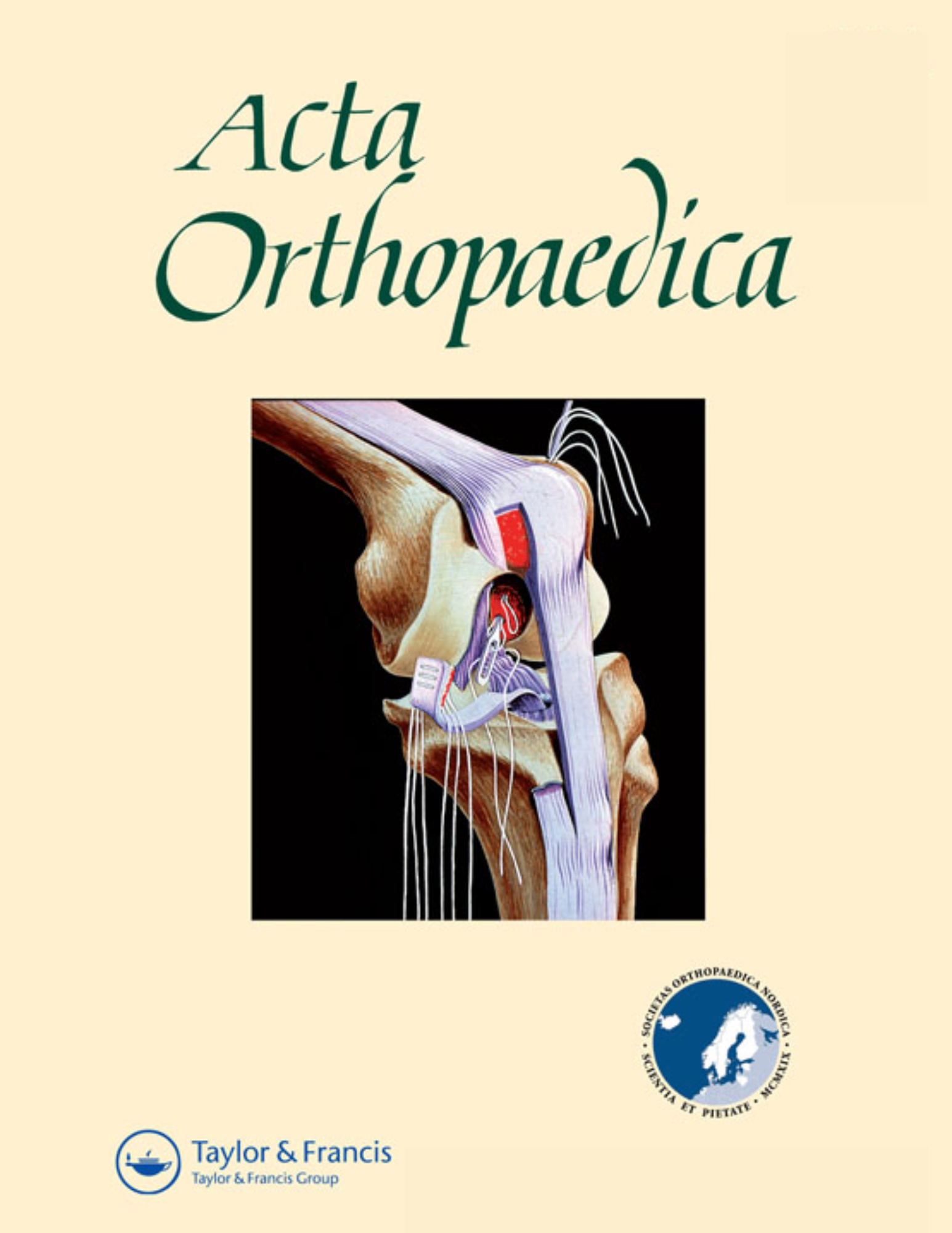
Peri- and intra-articular anaesthetics after TKA improve postoperative analgesia

Peri- and intra-articular anaesthetics after TKA improve postoperative analgesia
Comparison of peri- and intraarticular analgesia with femoral nerve block after total knee arthroplasty: A randomized clinical trial
Acta Orthop. 2007 Apr;78(2):172-9.Synopsis
80 patients requiring total knee arthroplasty (TKA) were randomized to receive one of two treatments for managing postoperative TKA pain. One group received a periarticular injection of analgesic followed by intra-articular bolus injections, and the other group underwent a continuous femoral nerve block (a standard treatment for postoperative pain at the institution of study) followed by an infusion of a local anaesthetic. Results showed that the group receiving a periarticular injection of analgesics followed by bolus injections had lower pain scores and better mobilization compared to the group receiving the continuous nerve block treatment.
Was the allocation sequence adequately generated?
Was allocation adequately concealed?
Blinding Treatment Providers: Was knowledge of the allocated interventions adequately prevented?
Blinding Outcome Assessors: Was knowledge of the allocated interventions adequately prevented?
Blinding Patients: Was knowledge of the allocated interventions adequately prevented?
Was loss to follow-up (missing outcome data) infrequent?
Are reports of the study free of suggestion of selective outcome reporting?
Were outcomes objective, patient-important and assessed in a manner to limit bias (ie. duplicate assessors, Independent assessors)?
Was the sample size sufficiently large to assure a balance of prognosis and sufficiently large number of outcome events?
Was investigator expertise/experience with both treatment and control techniques likely the same (ie.were criteria for surgeon participation/expertise provided)?
Yes = 1
Uncertain = 0.5
Not Relevant = 0
No = 0
The Reporting Criteria Assessment evaluates the transparency with which authors report the methodological and trial characteristics of the trial within the publication. The assessment is divided into five categories which are presented below.
3/4
Randomization
2/4
Outcome Measurements
4/4
Inclusion / Exclusion
4/4
Therapy Description
4/4
Statistics
Detsky AS, Naylor CD, O'Rourke K, McGeer AJ, L'Abbé KA. J Clin Epidemiol. 1992;45:255-65
The Fragility Index is a tool that aids in the interpretation of significant findings, providing a measure of strength for a result. The Fragility Index represents the number of consecutive events that need to be added to a dichotomous outcome to make the finding no longer significant. A small number represents a weaker finding and a large number represents a stronger finding.
Why was this study needed now?
Postoperative pain management after total knee surgery often involves a combination of different modalities and can cause numerous side effects. Postoperative pain may delay recovery; therefore, alternative methods of analgesia are of interest to researchers. Recent studies suggest that periarticular infiltration of local anaesthetics may be an effective way to reduce postoperative pain. This study examined the effects of using a peri- and intra-articular analgesic treatment compared to femoral nerve block treatment in managing postoperative pain.
What was the principal research question?
What is the quality of analgesia and mobilization in patients requiring total knee arthroplasty undergoing peri- and intra-articular injections compared to a continuous femoral nerve block procedure from the end of surgery to postoperative day 3?
What were the important findings?
- More patients in Group I (peri- and intra-articular injection group) (29/39) were able to walk >3 m on the first day post-operation compared to the Group F (continuous femoral nerve block group) (7/37). (P<0.001)
- Group I showed lower pain scores (median: 3 compared to median:5) and opioid consumption (median: 83 mg compared to median: 100 mg) on the first day post-operation compared to Group F. (P=0.001 and P=0.02)
- More patients in Group I were able to hold quadriceps tension for >5 sec (30/37 compared to 18/36) and achieved flexion >90 degrees (24/39 compared to 18/37) compared to Group F on the first day post-operation. (P=0.002 and P=0.3)
- The length of stay between Group I and Group F in the recovery room were similar (Group F: 3.5h; Group I: 3.0h). (p=0.05)
- The median length of stay for Group I was 5 days, and for Group F was 6 days. (P=0.03)
- No significant difference was seen in the number of days each group experienced adverse effects. (P>0.20)
What should I remember most?
Peri-articular injections of analgesics followed by intra-articular bolus injections can improve postoperative analgesia in patients undergoing total knee arthroplasty in comparison to a femoral nerve block.
How will this affect the care of my patients?
Use of peri- and intra-articular infiltration and injection may provide better postoperative pain management for patients undergoing total knee arthroplasty. Further studies are required to determine appropriate drug dosage and duration of treatment. It is also uncertain if patients may benefit from subsequent bolus injections after the morning of the first postoperative day.
Learn about our AI Driven
High Impact Search Feature
Our AI driven High Impact metric calculates the impact an article will have by considering both the publishing journal and the content of the article itself. Built using the latest advances in natural language processing, OE High Impact predicts an article’s future number of citations better than impact factor alone.
Continue



 LOGIN
LOGIN

Join the Conversation
Please Login or Join to leave comments.